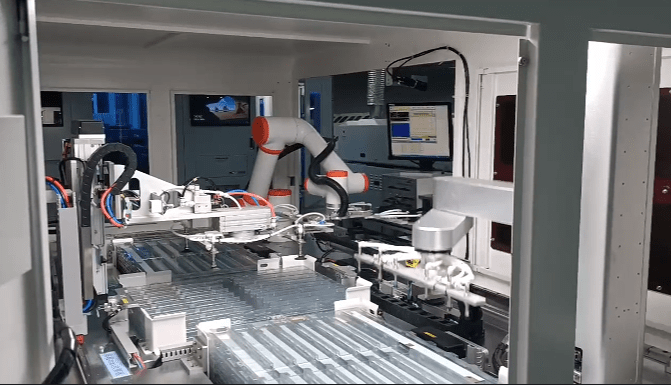
- April 16, 2025
- pruce
- 0
What are the application of cobots?
Collaborative robots, or cobots, have emerged as versatile tools bridging human capabilities with robotic precision across industries. Unlike traditional industrial robots confined to cages, cobots operate safely alongside humans, adapt to dynamic environments, and excel in tasks requiring flexibility. Their applications span industrial, medical, educational, and retail sectors, each offering unique opportunities to enhance productivity and innovation.
Here are several common cobot applications in 4 fields, including industrial/medical/educational/retail fields.
1.Industrial Applications: Precision Meets Efficiency
Cobots revolutionize manufacturing by automating repetitive tasks while collaborating with human workers.
Key applications include:
- – Assembly Line Assistance: Cobots handle intricate component assembly in electronics or automotive industries, such as placing microchips or tightening screws, reducing errors and fatigue.
- – Machine Tending: They load/unload materials into CNC machines or presses, enabling 24/7 production cycles without human intervention.
- – Quality Inspection: Equipped with vision systems, cobots scan products for defects (e.g., surface cracks or misalignments) and sort items in real time.
- – Welding and Painting: In small-batch production, cobots perform precise welding on custom parts or apply coatings with consistent thickness, minimizing waste.
By integrating seamlessly into workflows, cobots boost output while allowing human workers to focus on complex problem-solving.
2.Medical Applications: Enhancing Care and Safety
In healthcare, cobots support professionals in delivering accurate and safe patient care:
- – Surgical Assistance: Cobots like robotic arms stabilize tools during minimally invasive surgeries, reducing tremors and enabling millimeter-level precision in procedures such as neurosurgery.
- – Rehabilitation Therapy: They guide patients through repetitive motion exercises post-stroke, adjusting resistance based on real-time feedback to accelerate recovery.
- – Laboratory Automation: Cobots handle hazardous tasks like preparing radioactive pharmaceuticals or transporting bio-samples, minimizing contamination risks.
- – Patient Mobility Support: Mobile cobots assist nurses in lifting patients, reducing physical strain and preventing workplace injuries.
These applications improve clinical outcomes while prioritizing the safety of both medical staff and patients.
3.Educational Applications: Building Future-Ready Skills
Cobots serve as dynamic teaching tools, fostering hands-on learning in STEM fields:
- – Programming Workshops: Students code cobots to perform tasks like object sorting, gaining practical experience in robotics logic and sensor integration, and learning programming skills such as C++/C#/Python/Java.
- – Research Projects: Universities deploy cobots to explore human-robot interaction, such as testing collaborative algorithms for shared workspace navigation, and conduct some experiments by cobots.
- – Vocational Training: Technical institutes simulate real-world scenarios (e.g., cobot-assisted manufacturing) to prepare students for Industry 4.0 careers.
- – Special Needs Education: Cobots with AI interfaces engage children in interactive lessons, adapting to individual learning paces.
By demystifying robotics, cobots inspire innovation and equip learners with in-demand technical skills.
4. Retail Applications: Personalizing Customer Experiences
Retailers leverage cobots to streamline operations and enhance service:
- – Coffee Making: Cobots are widely used in new retail field such as making coffee or other drinks with the vending machine, which saves human labor, achieves the full automation of food making, bringing customers a happy experience.
- – Inventory Management: Mobile cobots scan shelves, track stock levels via RFID, and alert staff to restock items, reducing out-of-stock scenarios.
- – In-Store Guidance: Equipped with touchscreens, cobots direct shoppers to products, provide promotions, or check prices in multiple languages.
- – Click-and-Collect Automation: They retrieve online orders from storage and deliver parcels to curbside pickup points, accelerating fulfillment.
- – Interactive Marketing: Cobots demonstrate products (e.g., cosmetics sampling) or gamify shopping experiences to boost engagement.
These solutions optimize backend logistics while creating memorable, tech-driven customer interactions.
Conclusion: A Collaborative Future
From factory floors to hospital wards, cobots are redefining collaboration between humans and machines. Their adaptability ensures relevance in industrial automation, healthcare innovation, education modernization, and retail transformation. As technology advances, cobots will continue to unlock new possibilities, proving that the synergy of human creativity and robotic efficiency is the cornerstone of progress.

